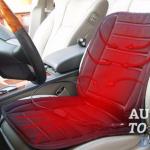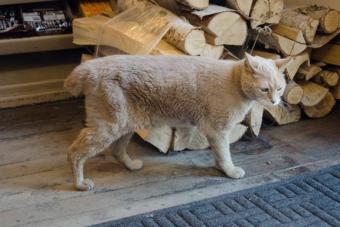Discussions and disputes on the choice of the form of implants in various forums are ongoing. But p Proper selection of the implant is one of the components of success both in the final perception of the new breast shape by the patient, and in minimizing possible complications and negative surgical consequences of the operation.
"Round or anatomical?" – this is exactly the choice faced by thousands of women who decide on mammoplasty, breast augmentation surgery with implants. There is an opinion that the use of anatomical implants allows the bust to look natural, both to the touch and in shape; round prostheses do not give such a result. Offhand, this statement seems true, but in reality, everything is not quite so. Let's try to figure it out.
Implants vary in:
form
projections
volume
surface texture
When choosing an implant, the surgeon takes into account many factors, such as surgical goals and techniques, anatomical features and, of course, the personal preferences of the patients. According to the surface texture, implants are smooth and textured, we will consider this issue in more detail in a separate topic.
The natural shape of the breast is certainly not round. It is really teardrop-shaped - starting with a flat slope on the upper part, the chest gradually increases in volume and protrudes forward (rises) in its lower part.

Therefore, an anatomical implant that mimics the effect of gravity on the chest looks more natural at first glance and is ideal for creating a breast shape. By the way, its original purpose is the reconstruction of an amputated (for example, in patients with breast cancer) or injured breast.
Despite the seeming logic of placing anatomical implants, most surgeons and patients prefer round implants.
Round implants, when compared with anatomical:
give more volume
raise chest higher
create a beautiful neckline (Victoria's Secret bra effect).
But not all women like a large volume in the upper chest, they consider this shape not quite natural, and prefer anatomical implants as more natural.
An anatomical implant looks more natural than a round one, right?
Yes and no.
A round implant, indeed, can sometimes give the shape of the breast unnaturalness and artificiality. For example, if placed too high on the chest, or in patients with insufficient volume of their own breast tissue, but who insisted on a large volume implant.
That is, it is in no way because of its shape. An implant of any shape can look fake. It depends only on how the implant corresponds to the individual shape of the patient's body. And in some cases, the round implant looks more "anatomical" than the anatomical one.
But all the arguments above refer to implants that are "lying on the table." And how will they behave when they are implanted in a living woman, made of flesh and bones?
Implanted in the breast round implant in general, "behaves" more naturally than teardrop. In an upright position, when a woman is standing or sitting, under the force of gravity, he independently acquires a natural, anatomical shape.
And of course, the round implant absolutely wins in a horizontal position. The natural breasts of a woman, when she lies down, naturally "blur". Anatomical same implant, the shape of which is rigidly predetermined in advance, will remain sticking up in its lower part - contrary to all the laws of gravity, giving itself away with its head; the round implant in the prone position looks quite natural. A round implant looks more natural even with active body movements - running, jumping, intense dancing, etc.
Before performing a direct breast augmentation surgery, the doctor must take into account a whole list of factors, which begins with the patient's wishes about the size and shape of the bust and ends with the doctor's aesthetic vision of the need for one or another approach. It is important to listen to the opinion of your operating doctor, because he knows how to make the right choice.
The surgeon is always an ally of the patient, and it is successful work in tandem with him that gives a consistently good result and satisfaction from the work done. Based on many years of experience, the doctor provides informed decisions about the brand of the implant, its size, access for surgery and many other components of mammoplasty.
Basic concepts

A. Width (base) of the implant.
B. Height (base) of the implant.
C. Projection of the implant.
Round implants
Round implants are characterized by the fact that the width of the base of the implant is equal to its height. In this case, the point of maximum projection is located above the center of the implant base. Thus, round implants with the same base width can differ from each other only in projection size.
For a round implant, the width and height of the base are equal. The point of maximum projection is located at the middle of the height of the base.

Round implants with the same base width can only differ in projection.
Being in the tissues of the patient (provided that the patient is in an upright position), the round implant to one degree or another acquires a certain “teardrop shape”. This degree depends, first of all, on the density or compliance of the shell and filler of the implant, the properties of the patient's tissues. If the round implant is placed under the pectoral muscle, then due to the pressure of the muscle on the upper pole of the implant, this “teardrop” will be somewhat higher than with the supramuscular location.

Round implant in horizontal and vertical positions.
Teardrop Implants
Teardrop implants are also referred to as "anatomical" implants because, according to many, this shape is the most consistent with the natural shape of the mammary glands. They are characterized mainly by the fact that the point of maximum projection of the implant is located below the middle of its height, that is, located in the lower half of the implant. In addition, in the vast majority of drop-shaped implants, the width and height of the base are not the same.
Thus, drop-shaped implants with the same base width can differ from each other not only in projection size, but also in different heights. This greatly increases the number of different combinations of width, height and projection, allowing manufacturers to create a wide and versatile range of implants of the same style.
In a drop-shaped implant, the width and height of the base are almost never equal. The point of maximum projection is below the mid-height of the base.

Teardrop-shaped implants with the same base width can differ from each other in both base height and projection.
This diversity gives the surgeon the opportunity to choose the necessary shape of the implant for almost any variant of the anatomy of the mammary gland.
Profile
One of the most important characteristics of the implant shape is the profile. The profile is the percentage of the projection of the implant to the width of its base. The larger the projection and the smaller the width of the base, the more high-profile the implant is. In other words, the profile value tells how "convex" (high profile) or "flat" (low profile) the implant is.
Each implant manufacturer has their own ideas about what a high or low profile is, just like clothing manufacturers do not agree on what XXL is. This difference in views is due to the fact that different manufacturers use different types of fillers and shells in their products, which differ in the degree of density and other characteristics.
Because of this, the ability of implants from different manufacturers to maintain a profile while in the patient's tissues (the properties of which, by the way, are also purely individual) differs and, apparently, when marking their rulers, they tend to give the alleged "final" value.

In general, you can focus on the following numbers (the article discussed McGhan implants):
- profile up to 32% - low profile implant.
- profile from 32 to 38% - medium profile implant.
- profile over 38% - high-profile implant.
Choice of implant shape
Round implants provide less fullness of the lower pole and greater fullness of the upper pole of the mammary gland in comparison with teardrop-shaped ceteris paribus. This manifests itself the stronger, the denser the shell and filler of the implant. In addition, the probability of visualizing the upper contour of a round implant in a patient with a thin layer of integumentary tissues is higher than when using a drop-shaped implant. Also, a round implant is more likely to form folds or “corrugations”. This manifests itself less, the denser the shell and filler of the implant.
Teardrop Implants provide greater fullness of the lower pole and less fullness of the upper pole of the mammary gland in comparison with round ones, all other things being equal. This is manifested the stronger, the higher the profile and the lower the height of the implant, the denser its shell and filler. This property of drop-shaped implants provides a certain “lifting” effect on the mammary gland, thereby enabling them to more successfully correct somewhat sagging breasts.
Drop-shaped implants, to a greater extent than round ones, retain their shape when changing body position. This property is manifested the stronger, the denser the shell and filler of the implant. The cost of drop-shaped implants, as a rule, is higher than round implants of the same manufacturer, all other things being equal.
"Lifting" effect of the drop-shaped implant
For patients with different types of physique and different types of chest, certain types of shape of the mammary glands are characteristic. The rounded shape of the mammary gland, in which the width approximately equals the height, is most often found in normosthenics, although there are exceptions to this rule. In patients with a hypersthenic physique, the width of the mammary gland often predominates over its height, and in asthenic girls, height often predominates. In such cases, if the patient wants to maximize breast enlargement, it is advisable to use drop-shaped implants, among which there are both "wide" and "high" models, while the width and height of round implants are equal.
LEFT Mammary gland with a predominance of width (hypersthenic physique) - a "wide" implant is required.
ON RIGHT Mammary gland with a predominance of height (asthenic physique) - a "high" implant is required.

When choosing an implant profile, it must be taken into account that the higher the profile, the stronger the visual effect of the increase, but the "naturalness" of the result is somewhat affected. The most beautiful shape of the mammary gland can be obtained using medium-profile implants.
However, there are situations where the use of a high profile is unavoidable. For example, significant excess skin with sagging mammary gland, which must be adequately "filled" in order to achieve a lifting effect. In this case, with the maximum width of the implant base, the projection of a medium- and even more so low-profile implant may not be enough to achieve the desired effect. The use of high-profile implants also has to be resorted to in patients with a narrow chest who want to enlarge their breasts to the maximum extent possible.
Thus, the ideal form of implants does not exist. Teardrop implants can be said to be somewhat more versatile in general, and most suitable for correcting sagging mammary glands. There is no alternative to round implants if it is necessary to fill the upper pole of the mammary glands strongly. In addition, round implants are preferred for axillary (through the armpit) access.
At the same time, all the features, advantages and disadvantages of round and drop-shaped implants listed above should not be overlooked. In any case, the choice should be made taking into account the wishes for the resulting breast shape, taking into account the characteristics of the original mammary glands, the chest, the properties of the patient's tissues and, of course, based on the aesthetic preferences of the surgeon and the patient.
The article by Kirill Gennadievich helped me better understand the issue of choosing the shape of the implant and determine what kind of breast shape I want to get in the end.
The choice of breast implants will have a significant impact on the appearance of the breast after the augmentation procedure. To achieve the desired result, you need to immerse yourself in the topic of choosing implants, so as not to rely only on the opinion of your plastic surgeon. Breast implants come in many shapes and qualities, some with specialized purposes: round, anatomical, smooth, textured, saline, silicone gel, etc. This article compares round and anatomical implants.
The selection of breast implants begins with measurements of the chest. A statistical scientific method is used to determine the width and height of the chest, the position of the chest folds, breast tissue, the position of the areola and possible breast asymmetries. These parameters will serve as a basis for discussing the options, goals and possible outcomes of the operation.
Anatomical gel implants
Anatomical implants use a textured surface that provides soft tissue attachment, which is desirable as it provides secure implantation and reduces the long-term risk of capsule collapse.
Multi-layer technology is used in the manufacture of the implant body, combining materials with special properties to provide a flexible protective barrier with reduced silicone permeability, increased strength and less risk of rupture.
The gel is a key component of the implant, as it gives it its shape and hardness. Silicone can be made into almost any form, from liquid to solid, depending on the number of "cross-link" components included in the formula. Anatomical breast implants use a hard gel (also known as "shape resistant"). Shape stability means that the gel retains its shape even after compression, such gels provide the best opportunity for shape control - while at the same time it has the firm consistency of natural breast tissue.
Round breast implants
Round implants usually use a soft gel, so they are less dimensionally stable.
The round breast implant is a compromise when it comes to breast augmentation (it does not require the use of anatomical implants).
They have one form that fits all. They are traditional and have been used in medicine since 1963. Although women's breasts are not naturally round, the round implant remains the most widely used breast implant in the UK. When properly placed, round implants can provide a natural result and satisfy the desires of women, especially young girls.
When choosing a round implant, two parameters are important: the diameter of the implant and its projection. It is important to note that round implants mainly add volume to the breast.
Anatomical implants – individual solution
The function of a shaped implant is to strategically place volume when needed. In appearance, it is most similar to a young natural female breast.
Because anatomical breast implants are fully customizable in shape and volume, they provide a customized solution for proportionate enhancement of the female breast. In addition to providing a more aesthetic appearance, these implants can also be used to lift the breast, restore volume lost after breastfeeding, or restore asymmetry. Anatomical implants also provide an opportunity to improve the appearance of patients with breast deformities (tubular breasts), as well as for a wide range of reconstructive procedures after oncological surgery.
Many women may not realize that the volumes (i.e. weight of the implant) are different for anatomical and round implants. Among implants with the same width, anatomical implants will be about 20% lighter than round implants with the same base width. In addition, anatomical implants require less gel compared to round implants.
If more breast augmentation is required, anatomical implants will be more balanced with the chest and shoulders than large round implants.
When using anatomical implants, three parameters can be changed: width, height and projection of the implant. For this reason, anatomical breast implants are able to provide a “three-dimensional” breast augmentation.
Celebrity Choice. Photo “Before and after”
Kaley Cuoco preferred anatomical implants.Implantation methods
Anatomical breast implants are usually placed: behind the mammary gland and over the muscle, partly behind the pectoralis muscle using a biplanar approach, and completely behind the pectoralis and serrative muscles. All these "places" have certain advantages and characteristics.
All textured breast implants are fixed into a permanent position after two weeks. Before this, the implants can rotate (according to statistics, this corresponds to 1%). If this happens, a minor adjustment will be required to reinsert the implant.
Safety and Predictable Results
Round silicone implants have been used for over 45 years, and gel ones since 1993. Due to the great worldwide interest, the anatomical gel implant is one of the most studied, which means that there is a lot of clinical data supporting the safety and predictable results associated with them. Of all breast implants that have undergone clinical trials, anatomical bonding implants have the lowest complication rates of any type.
Which implants are better to choose?
Anatomical breast implants provide an individual and aesthetically pleasing solution for improving the shape and volume of the breast. As a solution for natural 3D breast augmentation, implants meet both general aesthetic concerns and specialized aesthetic requirements equally well.
Related publications:
We welcome readers on our website for whom the issue of anatomical implants is relevant. Complete unity in the use of different types of endoprostheses is not observed either among plastic surgeons or among patients. And today we will consider one of the types of bust shape improvement - increase breasts with anatomical implants.
Types of implants - "anatomists" and criteria for their selection
Anatomical differences:
- dimensions (or height and base/base or diameter);
- shell texture;
- filler material and sheath.
The doctor can and should describe all the features of endoprostheses to you during the consultation. Focusing on the advantages and disadvantages.
Profile
The main difference between this type of endoprosthesis and hemispheric implants is the profile. To be precise, the profile is usually understood as the height from the base (base) to the highest point of the implant. By height or profile, it is customary to distinguish endoprostheses:
- with high;
- average;
- low profile.
Some companies, for example, (Germany), offer patients ultra-high profile breast endoplasty.
 It is the profile, as a parameter, that allows the specialist to choose the ideal prosthesis for improving the female bust. When choosing one or another implant, the doctor is guided by:
It is the profile, as a parameter, that allows the specialist to choose the ideal prosthesis for improving the female bust. When choosing one or another implant, the doctor is guided by:
- on your own experience;
- aesthetic taste;
- wishes of the client;
- her anatomy;
- and the current state of the tissues.
- in the process of eliminating mastoptosis;
- and to give volume to the upper pole of the chest.
This form The prosthesis makes the breast as natural as possible, but less lush compared to endoinserts of the same size. 
Texture
According to the texture, you can choose an implant:
- with a smooth surface;
- textured (porous).
The former are cheaper, the latter are less prone to displacements and other unpleasant movements inside the pocket prepared for it. The presence of texture allows tissues to grow into the pores of the shell and fix the prosthesis.
Fillers and shell
Most modern breast prostheses are made of elastomer as a shell. Many firms specializing in the production of breast prostheses prefer to make multilayer capsules of increased density. Such endoprostheses can be stretched almost 10 times without tearing the capsule.
Less commonly, manufacturers offer two-layer or two-shell lumen implants. In this case, the space between the layers of the shell is filled with saline, and the inner capsule already contains a gel.
Modern implants are filled mainly with silicone balls and gels:
- cohesive;
- mobile;
- dense cohesive (cross-linked) with "shape memory";
- hydrogel;
- biocompatible filler, etc.
 The latest offerings from breast implant companies are two-gel prostheses.
The latest offerings from breast implant companies are two-gel prostheses.
Novelties in the market of breast implants
It will stop on micropolyurethane implants. Polyurethane endoprostheses have been developed for reimplantation in patients who developed after the first endoprosthesis. Over time, plastic surgeons began to recommend this variant of the prosthesis to all potential clients.
The surface of these implants makes it possible to minimize the growth of connective tissue around a foreign object (prosthesis). This reduces the risk of developing contractures after mammoplasty to almost nothing.
Most implants have a shell with a fairly significant thickness. Micropolyurethane shells are thin, that is, their thickness is not more than a few millimeters. But by the number of micropolyurethane bubbles, if they are stretched in one line, you can get "beads" several kilometers long.
Connective tissue will grow into the cavities formed by them, fixing the prosthesis. Due to this, the layer of connective tissue will be thin, but firmly holding the prosthesis in “its arms”, minimizing the risk that the anatomical implant will unfold, spoiling the work of the surgeon.
The same feature of the end insert allows minimizing the risk of such an unpleasant complication as ripples. Such prostheses allow plastic surgery to remain at the peak of popularity. 
Advantages of modern "anatomists"
High quality and reliability of such endoprostheses are ensured by:
- high aesthetic performance, which can be assessed in the photo of patients who underwent the procedure;
- reliability and tear resistance;
- safety in case of damage (modern gels are either biocompatible or practically do not leak through a gap);
- sterility;
- pleasant tactile sensations (in contact with the female breast, it is almost impossible to detect the implant).
At the same time, the anatomical shape of the endo-insert provides a natural appearance of the breast, which excludes visual recognition of plastic surgery.
Disadvantages of anatomical endoprostheses
When inserting a prosthesis, surgeons may not use all access points. For the implantation of a micropolyurethane implant, a higher qualification of a specialist is required than for the introduction of a conventional anatomist. 
If the prosthesis is flipped, it will be clearly noticeable and a second operation will be required, in contrast to the flip of a round endoprosthesis. A normal anatomist may eventually take on a rounded shape due to the growth of fibrous tissue.
The chest, corrected by anatomists, cannot be corrected with the help of underwear. And, of course, unlike round “brothers”, anatomical endoprostheses retain their shape even in the prone position, which is not entirely natural. This is easy to see in the pictures before and after implantation.
This concludes our brief review of this one, we are waiting for you on ours again. If you find something interesting for yourself in our articles, be sure to share this information with your friends through social networks.
In 1961, a breakthrough in plastic surgery was made by saline endoprostheses - round bags with saline, fully compatible with the human body. But too soft, tactilely detectable, with a tendency to rupture, saline implants were replaced by silicone implants in the mid-90s. These gel-filled elastomers are safe for the patient and remain immobile even in the event of injury. Silicone implants with different fillers most accurately imitate natural breasts, do not stand out and are not felt to the touch.
Types of implants by shape
Round implants- the best choice for severe ptosis. They lift the chest, make it lush and voluminous in the upper part. Endoprostheses of this form are most suitable for patients with a wide chest and rounded outlines of the “native” bust. For the surgeon, they are easier to install, and cheaper for the patient. But for many, a significant disadvantage is their unnatural appearance.

Invention drop-shaped (anatomical) implants changed the view of mammoplasty: visually they repeat the natural shape of the female breast. Teardrop-shaped products with a cohesive filler and a textured surface are well fixed in the pockets of the glands and grow into the patient's tissues. These implants retain the softness and smoothness of the contours of the breast, but at the same time keep their shape in a horizontal position. Anatomical implants are ideal for enlargement of very small breasts and ensure the proportionality and naturalness of the breast. Sometimes the pectoral muscle deploys the implant. Such an “incident” with a round implant will be invisible, and with an anatomical endoprosthesis, the deformity of the breast will be visible. For a surgeon, working with "droplets" requires a lot of experience and skill.

Implant profile
Patients with different body types require implants of different profiles. Profile - the ratio of the projection of the implant to the width of the base - is low, medium and high. Round implants have the same width and height, while drop-shaped implants differ in both height and width. It is this parameter of anatomical implants that allows the doctor to choose the most suitable option for a woman and give the breast an ideal shape. Teardrop implants are also versatile for eliminating sagging and filling the upper pole of the breast.
Which stars have enlarged their breasts with anatomical implants?
1 / 10
Which of the doctors enlarges the breast with anatomical implants?
There is no absolute unity in the use of certain types of implants among plastic surgeons. Each specialist focuses on the wishes of the patient, the structural features of the mammary glands and chest, and his own vision of beauty. As you know, breast augmentation with anatomical implants is more expensive and requires special knowledge and skills from the doctor. Some plastic surgeons do mammoplasty expensively and well, others - cheaply and badly. When it comes to your own appearance, it is important to find a golden mean in terms of price / quality ratio. The plastic surgeon knows exactly which implants will emphasize the advantages and hide the flaws of the patient (for example, curvature of the spine, asymmetry of the chest or nipples), make the mammary glands the most natural and harmonious for her type of figure. The professionalism of Maxim Leonidovich is evidenced by the huge employment: four plastic surgeries and 40 consultations a day, a planned work schedule for months ahead. And most importantly - an individual approach to each, because in the matter of choosing an implant there can be no universal advice.
Now breast correction with anatomical implants by plastic surgeon Maxim Leonidovich Nesterenko costs 190,000 rubles.





